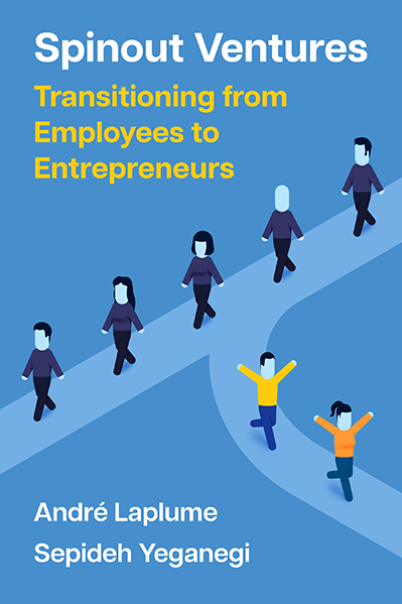External Enabler Theory of Entrepreneurship
The External Enabler Framework (Davidsson, Recker & von Briel, 2020) is a conceptual toolbox developed for analyzing the strategic and fortuitous influence of changes to the business environment in entrepreneurial pursuits. External Enabler (EE) refers to significant changes to the business environment, such as new technologies, regulatory changes, macroeconomic shifts, demographic and sociocultural trends, changes to the natural environment, and the like. The basic assumption of the EE body of work is that every such change will benefit some entrepreneurial initiatives even if it disadvantages other economic activities. EE analysis focuses on those enabled; other frameworks are needed for analyzing negative consequences of change.
The EE concept was introduced as a more workable alternative to “objective opportunity” for realizing the idea of entrepreneurship as a nexus of enterprising agents and favorable environmental conditions (Davidsson, 2015). Unlike the notion of objective opportunity, EEs are not seen as complete, pre-existing success recipes available for discovery but offer partial enablement at any stage of the entrepreneurial process. Further, the EE Framework offers common terminology aiming to join together previously scattered research on individual types and instances of environmental changes as drivers of entrepreneurial action and success, thereby facilitating accumulation of a strategically actionable evidence-base in this domain (Kimjeon & Davidsson, 2021).
The EE Framework describes the forms and functions of EEs through the notions of EE-level characteristics and venture-level mechanisms and roles. Variance in all of these apply across different types of EE and is assumed important for strategic decisions and actions. EE characteristics describe how EEs come about and their range of impact. The onset of an EE can be gradual vs. sudden and predictable vs. unpredictable. EE scope has four dimensions: spatial, sectoral, sociodemographic, and temporal, which classify EEs’ range of impact in terms of places, industries, people, and time. The EEs onset and scope are likely to affect how many and what type of ventures/firms will benefit as well as the level of success they can reach.
EE mechanisms specify how individual ventures can benefit from EEs, such as saving on resources or making more/new resources available; making new or improved products and services possible; increasing demand; and improving profit margins. Apart from varying in kind and extent of enablement, mechanisms vary in opacity and agency-intensity. Opacity stands for the inherent degree of difficulty of identifying the enabling mechanism from an EE—is it obvious to anyone that an EE can offer benefit X to a venture of type Y, or does that require specialized knowledge and/or extraordinary creativity? Agency-intensity reflects how much time and resources are required to activate an EE mechanism—is it automatic and for free or does it require significant time, money and effort? Opacity and agency-intensity are strategically important because more demanding mechanisms come with higher risk but also potential for greater reward.
EE roles capture the higher-order EE influences across a venture’s development. The roles are triggering (EEs inspire the commencement of the venture creation process or a major reorientation of the venture), shaping (EEs influence features of the venture, its market offering, its choice of target market, or its creation process) and outcome-enhancing. Outcome-enhancement can pertain to intermediate or final outcomes such as making progress, funding success, and successful market entry as well as growth, scaling, and profitability beyond the creation stage. The distinction between triggering and outcome-enhancement is important because entrepreneurs may overestimate the value of some EE mechanisms (leading to excessive triggering) and underestimate others (leading to opportunities foregone for many and significant advantage for the minority that captures the mechanism).
Albeit gaining considerable traction, as of early March 2022, the EE Framework is a recent addition to management and organization theory, meaning that most of its potential for empirical research and practical guidance is yet to be explored and further developed. The originators have used it to explain how a range of digital technologies enabled a surge in independent IT hardware start-ups (von Briel et al., 2018) and to analyze how the Covid-19 pandemic enabled a range of ventures across many industries (Davidsson et al., 2021). Kimjeon and Davidsson (2021) offer a research agenda based on the strength and weaknesses of prior research on environmental change as related to entrepreneurship; research that mostly predated the EE framework. Prominent adoption and application of the EE concept and framework by other researchers include Chen et al. (2020) and Chalmers et al. (2021). Such works also extend the application of the EE framework beyond its original context of venture creation (Klyver & Nielsen, 2021).
A special thanks to Per Davidsson for this guest post!
Sources:
Chalmers, D., Matthews, R., & Hyslop, A. (2021). Blockchain as an external enabler of new venture ideas: Digital entrepreneurs and the disintermediation of the global music industry. Journal of Business Research, 125, 577-591.
Chen, J. J., Cui, C., Hunt, R. A., & Li, L. S. Z. (2020). External enablement of new venture creation: An exploratory, query-driven assessment of China's high-speed rail expansion. Journal of Business Venturing, 35(6), 106046.
Davidsson, P. (2015). Entrepreneurial opportunities and the entrepreneurship nexus: A re-conceptualization. Journal of business venturing, 30(5), 674-695.
Davidsson, P., Recker, J., & von Briel, F. (2020). External enablement of new venture creation: A framework. Academy of Management Perspectives, 34(3), 311-332.
Davidsson, P., Recker, J., & von Briel, F. (2021). COVID-19 as External Enabler of entrepreneurship practice and research. BRQ Business Research Quarterly, 24(3), 214-223.
Kimjeon, J., & Davidsson, P. (2021). External enablers of entrepreneurship: A review and agenda for accumulation of strategically actionable knowledge. Entrepreneurship Theory and Practice, 10422587211010673.
Klyver, K., & Nielsen, S. L. (2021). Which crisis strategies are (expectedly) effective among SMEs during COVID-19?. Journal of Business Venturing Insights, 16, e00273.
von Briel, F., Davidsson, P., & Recker, J. (2018). Digital technologies as external enablers of new venture creation in the IT hardware sector. Entrepreneurship Theory and Practice, 42(1), 47-69.
